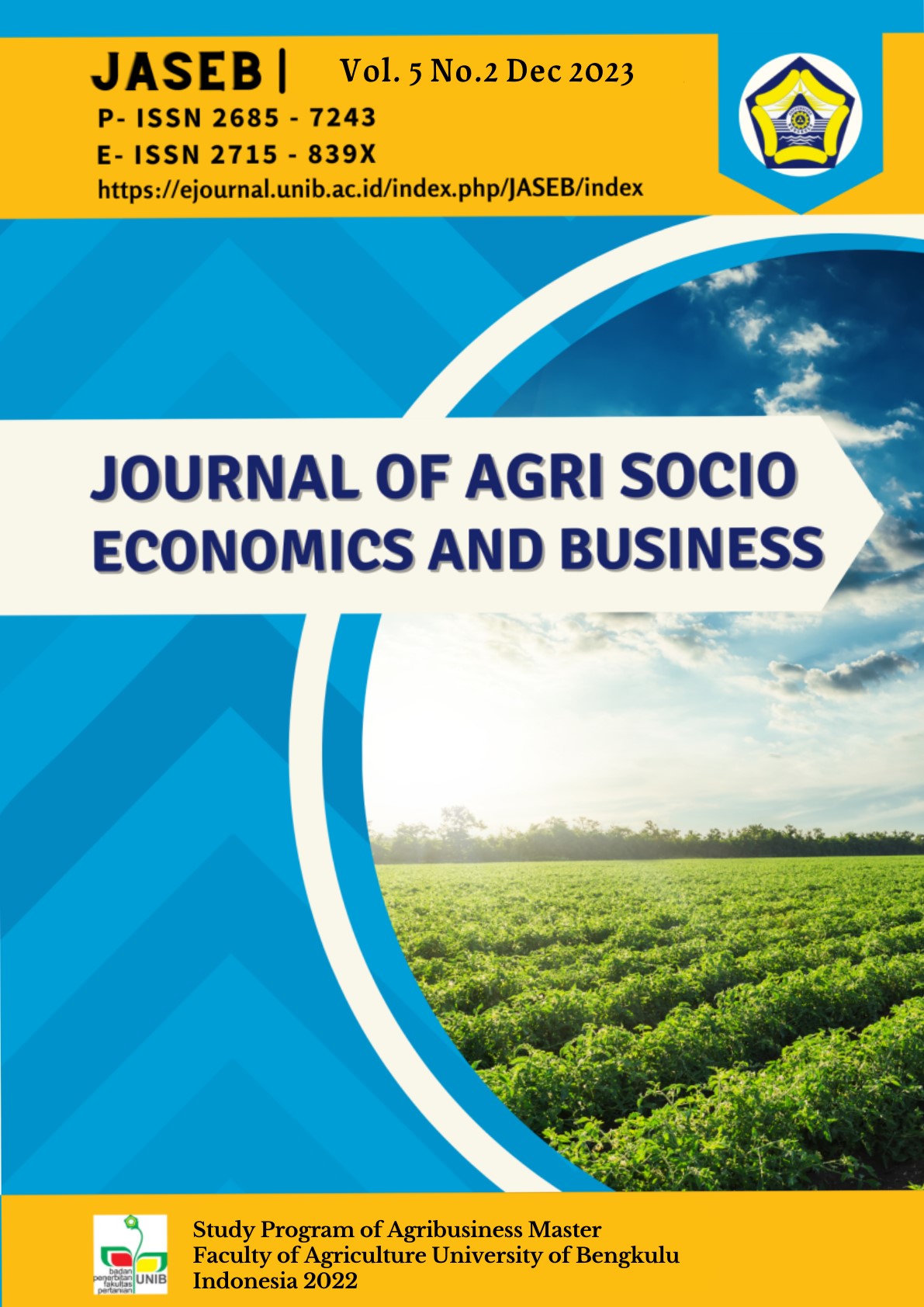Main Article Content
Abstract
Arabica coffee productivity in Simalungun Regency has the highest value, namely 1.25 tons/ha, among other arabica coffee producing districts in Sumatra Utara Province. However, the level of feasibility of return on investment made by farmers of arabica coffee has not been measured. The research method used to determine the feasibility and sensitivity of arabica coffee farming is Net B/C ratio, Gross B/C ratio, Profitability Ratio, Net Present Value and Internal Rate of Return. The results of the research show that arabica coffee farming is financially feasible based on the criteria of Net B/C Ratio (2.33), Gross B/C Ratio (1.38), Profitability Ratio (2.31), NPV (Rp. 23,194,329), and IRR (25.06%). The sensitivity of arabica coffee farming occurs if fertilizer and labor costs increase by 55% and production prices fall, then arabica coffee farming is not worth pursuing. Arabica coffee farming in Raya Huluan Village is financially feasible but farmers have not been able to independently cultivate arabica coffee properly. Therefore, farmers are given assistance on how to cultivate arabica coffee farming, types of fertilizer and dosage of fertilizer, timing of fertilizer application so that the economic life of arabica coffee is more than 10 years.
Article Details
Copyright (c) 2023 Ellys Yuliarti, Muhamad Mustopa Romdhon, Luciana Saragih

This work is licensed under a Creative Commons Attribution-ShareAlike 4.0 International License.
An author who publishes in the Journal of Agri Socio Economics and Business agrees to the following terms:
Author retains the copyright and grants the journal the right of first publication of the work simultaneously licensed under the Creative Commons Attribution-ShareAlike 4.0 License that allows others to share the work with an acknowledgement of the work's authorship and initial publication in this journal
Submission of a manuscript implies that the submitted work has not been published before (except as part of a thesis or report, or abstract); that it is not under consideration for publication elsewhere; that its publication has been approved by all co-authors. If and when the manuscript is accepted for publication, the author(s) still hold the copyright and retain publishing rights without restrictions. For the new invention, authors are suggested to manage its patent before published. The license type is CC-BY-SA 4.0.
Journal Agri Socio-Economics and Business is licensed under a Creative Commons Attribution-ShareAlike 4.0 International License.
